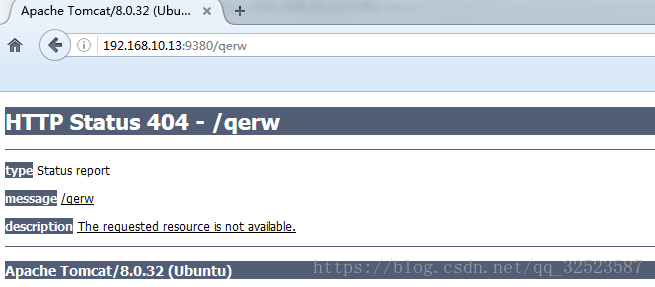tomcat设置错误页面
今日学习笔记:
当我们访问tomcat的一个不存在的页面,返回错误信息如下:

这样的界面直接暴露给用户并不友好,有时候还不安全,因此一般需要修改默认的错误页。
vim /$TOMCAT_HOME/conf/web.xml
在文件末尾,</web-app>的前面,加上以下内容:
<error-page> <error-code>400</error-code> <location>/error.html</location> </error-page> <error-page> <error-code>404</error-code> <location>/error.html</location> </error-page> <error-page> <error-code>500</error-code> <location>/error.html</location> </error-page>
在/$TOMCAT_HOME/webapps/ROOT目录下添加error.html文件(该页面可以替换成你自己自定义的界面):
<!DOCTYPE html> <html xmlns="http://www.w3.org/1999/xhtml"><head> <title>网页访问不了</title> <meta http-equiv="Content-Type" content="text/html; charset=utf-8"> <link rel="stylesheet" type="text/css" href="404/error_all.css?t=201303212934"> </head> <body class="error-404"> <div id="doc_main"> <section class="bd clearfix"> <div class="module-error"> <div class="error-main clearfix"> <div class="label"></div> <div class="info"> <h3 class="title">啊哦,你所访问的页面不存在了,可能是炸了</h3> <div class="reason"> <p>可能的原因:</p> <p>1.手抖打错了。</p> <p>2.链接过了保质期。</p> </div> </div> </div> </div> </section> </div> </body></html>
再次打开一个不存在的界面,显示如下:

---------------------
注意 : 删除tomcat的默认目录,只保留ROOT目录,并将ROOT目录的内容清空(rm -rf *) 用于存放error.html
原文:https://blog.csdn.net/qq_32523587/article/details/82110940
if you want to go fast,go alone,if you want to go far,go together

